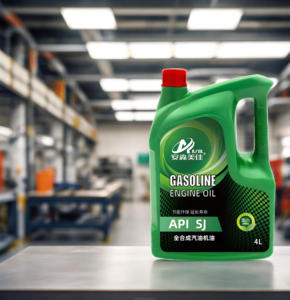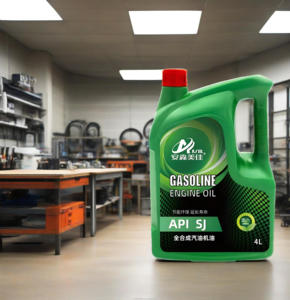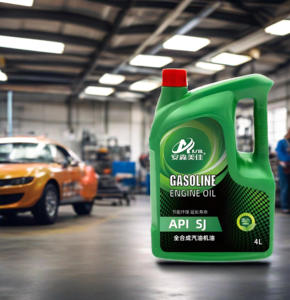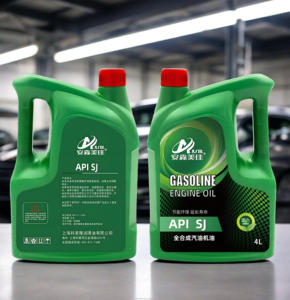(324 products available)












































































































































































































Lubricants name refer to a variety of substances that reduce friction between surfaces in mutual movement to minimize wear and heat generation. Depending on their origin, lubricants can be classified as follows:
Liquid lubricants:
Liquid lubricants are the most commonly used type. They include oils, such as mineral oil, synthetic oil, and vegetable oil. Liquid lubricants have excellent penetrating properties and can easily flow into small spaces and around complex shapes. This property makes them suitable for high-speed and high-load applications, such as in engines, gearboxes, and bearings. They also have good heat transfer properties, making them suitable for cooling applications.
Semi-solid lubricants:
Semi-solid lubricants include greases and pastes. Grease is a mixture of oil and a thickening agent, often used in applications where liquid lubricants would not stay in place due to high temperatures or vibrations. Grease has better adhesion properties, which makes it suitable for low-speed, high-load applications, such as in wheel bearings and joints. Lubricant pastes, often containing solid lubricants dispersed in a small amount of oil or grease, are used in high-pressure applications where a stable lubricant is required.
Solid lubricants:
Solid lubricants, such as graphite, molybdenum disulfide, and PTFE (Teflon), are used in high-temperature or vacuum applications where liquid and semi-solid lubricants fail. They provide excellent lubrication properties and can withstand high pressures and temperatures. Solid lubricants are often used in situations where the lubricant cannot be replenished or where contamination is a concern.
Specialty lubricants:
Specialty lubricants are designed for specific applications and conditions. These include high-temperature lubricants, low-temperature lubricants, water-resistant lubricants, and bio-based lubricants. Each type is formulated to meet the specific requirements of different environments and materials, ensuring optimal performance and protection.
Lubricants have various designs, and each is intended for a specific application and performance requirement. Here are some general design features of lubricants:
Base Oils
The base oils are the primary component of lubricants. They provide the fundamental lubricating properties. The choice of base oil significantly impacts the lubricant's performance characteristics. There are three main categories of base oils:
Mineral Oils: These are derived from refining crude oil. They are commonly used due to their availability and cost-effectiveness. They contain additives to improve stability and performance.
Synthetic Oils: These are chemically engineered and offer superior performance in extreme conditions. They have a more consistent molecular structure. They provide better low-temperature fluidity and high-temperature stability.
Biodegradable Oils: These are derived from natural sources like vegetable oils. They are environmentally friendly and break down more easily than mineral oils. They are ideal for applications where environmental impact is a concern.
Additives
Additives are chemical compounds mixed with base oils to enhance their properties and performance. They play a crucial role in determining the lubricant's effectiveness and longevity. Each additive performs a specific function.
Detergents and Dispersants: They help keep engine parts clean by suspending contaminants and preventing sludge formation.
Antioxidants: These slow down the oxidation process, extending the lubricant's life by reducing the formation of harmful byproducts.
Anti-Wear and Extreme Pressure Additives: These form protective films on surfaces to reduce wear and tear in high-load conditions.
Viscosity Index Improvers: These maintain consistent viscosity across a range of temperatures, ensuring reliable lubrication in varying conditions.
Viscosity
The viscosity of a lubricant measures its thickness and resistance to flow. It is a critical property influencing the lubricant's performance. Viscosity affects the lubricant's ability to form a protective film between moving parts. This prevents wear and ensures smooth operation.
Lubricants with low viscosity flow easily and provide quick lubrication. They are suitable for applications with high-speed moving parts. They require rapid oil circulation. High viscosity lubricants are thicker and maintain their film strength better at high temperatures. They are ideal for heavy-load applications where static friction is high.
Performance Characteristics
Performance characteristics are the various attributes that determine how effective a lubricant is in its application. These characteristics are critical in selecting the right lubricant for specific machinery or engines.
Thermal Stability: This refers to the lubricant's ability to maintain its properties and performance at elevated temperatures. It is crucial for applications involving high operating temperatures. For instance, internal combustion engines and industrial machinery. A thermally stable lubricant minimizes degradation, reducing the formation of deposits and sludge.
Oxidation Stability: This measures the lubricant's resistance to chemical reactions with oxygen over time. Oxidation can lead to the formation of acids, sludge, and other harmful byproducts that deteriorate the lubricant's quality. Additives like antioxidants are often incorporated to enhance oxidation stability. This extends the lubricant's service life and maintains its protective qualities.
Lubricants enhance pleasure and comfort during intimate activities. Here are some wearing and matching suggestions to elevate the experience:
Wearing Suggestions
Choose the right lubricant for the activity. For vaginal intercourse, pick a water-based or silicone-based lubricant. Water-based options like Astroglide or KY Jelly are safe with condoms and sex toys. Silicone-based lubes such as Uberlube last longer and are great for sensitive skin. They do not dry out quickly and are excellent for longer sessions. For anal sex, a thicker lubricant is ideal. Try the Anal Ease or Sliquid Sassy. These provide extra cushioning and stay in place better. They are perfect for novices and seasoned users. Always check ingredient lists. Avoid lubes with irritants like glycerin or parabens. These can cause discomfort or infections for some women. If allergies are a concern, do a patch test. Apply a small amount on the wrist and wait for a reaction. It helps ensure a safe and enjoyable experience.
Matching Suggestions
Water-based lubes mix well with most sex toys and condoms. They are versatile and safe for most uses. Silicone-based lubes are not suitable for all sex toys. They can damage silicone toys. Always check toy materials before use. For anal play, match thicker lubes like Sliquid or Anal Ease. They provide the necessary support and comfort. Do not mix oil-based lubes with latex condoms. They can cause the condom to break. Always match lubes to the materials involved. This ensures safety and effectiveness. It also enhances pleasure and reduces risks. For sensitive skin, choose hypoallergenic options. Look for lubes with soothing ingredients like aloe vera or coconut oil. These can enhance comfort and enjoyment.
Q1: What are the main types of lubricants?
A1: Lubricants can be classified into three main types: oils, greases, and solid lubricants. Liquid oils are generally mineral or synthetic fluids, while greases are thickened oils with solid additives that may be used in high-temperature or load applications. Solid lubricants, such as graphite or molybdenum disulfide, perform well at high temperatures or in vacuum settings.
Q2: How can one select the right lubricant for an application?
A2: Choosing the correct lubricant requires considering aspects like operating temperature, load, speed, and the materials involved. Also, it's essential to understand the lubricant's properties, including viscosity, stability, and compatibility with other substances. Consult the manufacturer's specifications or lubricant guides to find suitable options for a specific application.
Q3: How should lubricants be stored and handled?
A3: Lubricants must be stored in a clean, dry, and cool place away from direct sunlight and heat sources. Keep containers tightly sealed to prevent contamination from moisture, dust, or other foreign materials. Use clean tools and equipment when transferring lubricants to avoid contaminating them. Always follow the manufacturer's recommendations for storage and handling procedures.
Q4: Are there environmentally friendly lubricant options?
A4: Yes, various environmentally friendly lubricants are available. Biodegradable lubricants are made from renewable substances and break down naturally without harming the ecosystem. Additionally, some synthetic lubricants are developed with lower environmental impact, producing fewer pollutants and having a reduced carbon footprint. Choosing eco-friendly lubricants can help reduce environmental effects while maintaining effective lubrication performance.